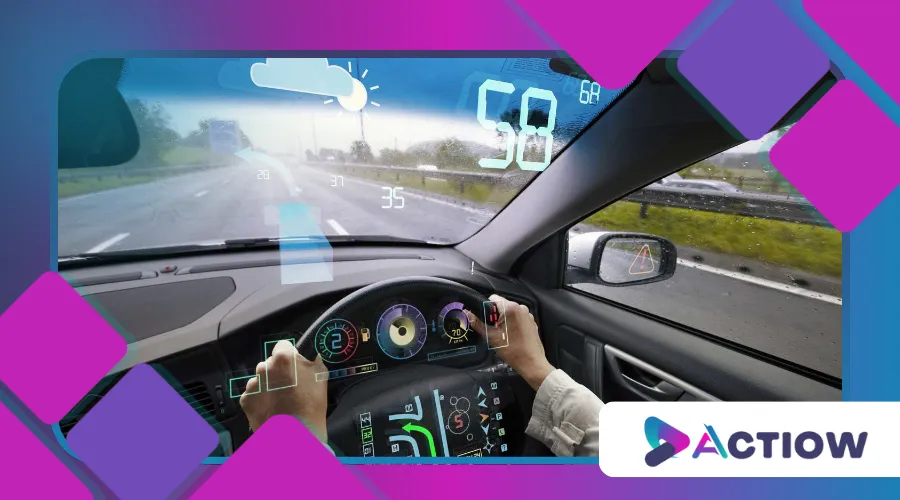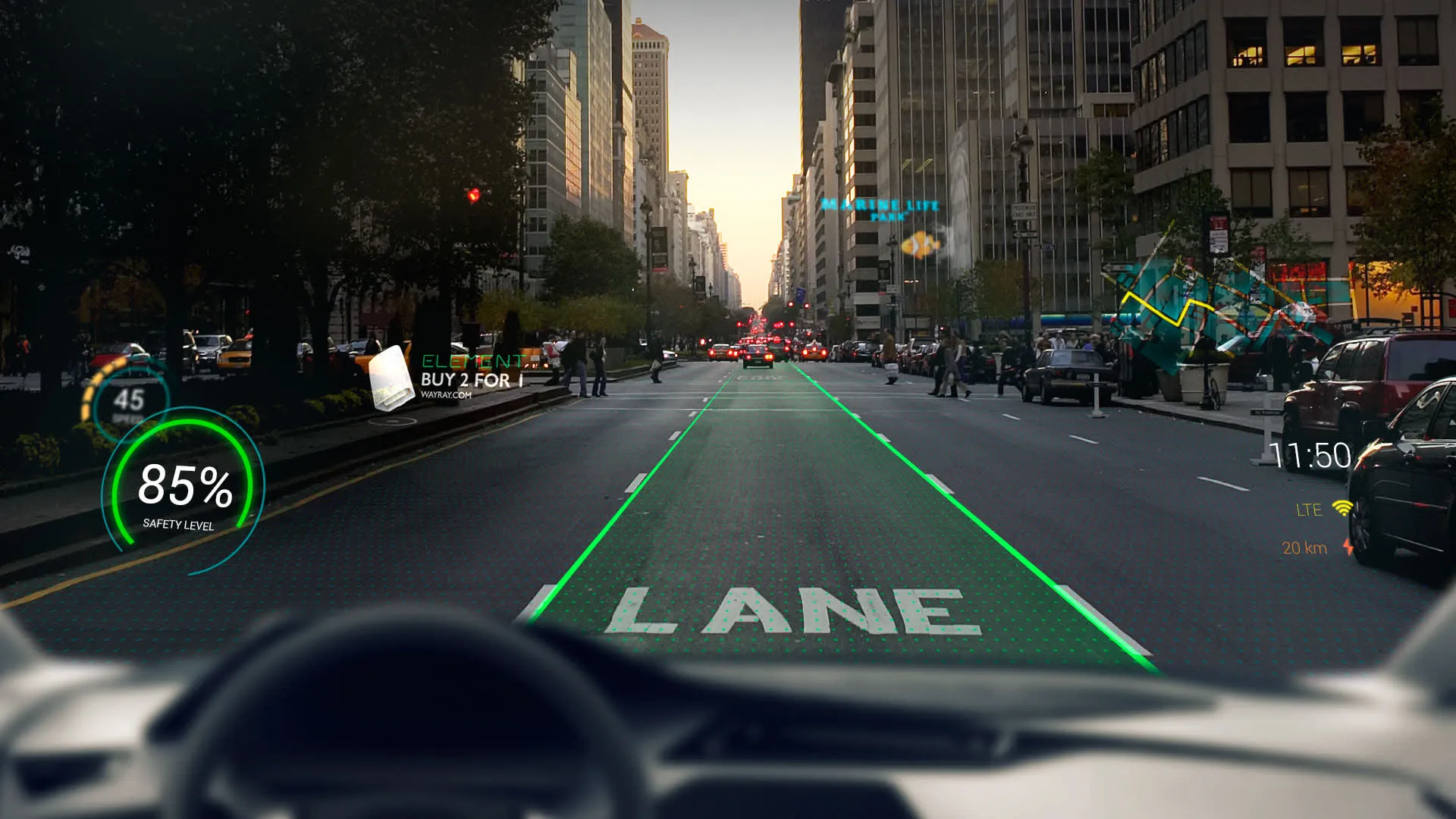Cars with Augmented Reality: Innovation in the Dashboard

Anúncios
The automotive industry is undergoing a radical transformation, and cars with augmented reality (AR) are at the forefront of this revolution.
No longer confined to sci-fi movies, AR is reshaping how drivers interact with their vehicles, merging digital information with the real world for a safer, smarter, and more immersive driving experience.
This innovation is not just about aesthetics; it fundamentally changes the way information is presented to drivers, enhancing situational awareness.
Anúncios
As technology advances, we can expect even more sophisticated integrations, including machine learning algorithms that adapt to individual driving styles.
Moreover, the potential for AR extends beyond just navigation and safety—it could redefine the entire driving experience, making it more engaging and interactive.
Incorporating user feedback into AR designs will be crucial for ensuring that the technology meets the needs of drivers.
As consumer acceptance grows, we may see a wider adoption of AR features across various vehicle models, democratizing access to this cutting-edge technology.
How Augmented Reality is Reinventing the Dashboard
Traditional dashboards rely on analog dials and basic digital screens.
However, cars with augmented reality project critical data directly onto the windshield, overlaying speed, directions, and even potential dangers onto the driver’s field of view.
This integration minimizes the need for drivers to glance away from the road, significantly enhancing safety and reducing distractions.
A 2023 study by McKinsey & Company found that AR-enhanced dashboards reduce driver reaction times by 20%, significantly improving safety.
This isn’t just about convenience—it’s a paradigm shift in automotive design.
+ Driver Assistance Systems: What They Are and How They Work
Key Innovations in AR Dashboards
| Feature | Benefit |
|---|---|
| AR Navigation | Turn-by-turn directions appear as floating arrows on the road. |
| Collision Warnings | Visual alerts highlight pedestrians or obstacles in real time. |
| Lane Guidance | Virtual lane markers prevent drifting without distracting the driver. |
Unlike traditional infotainment systems, AR integrates seamlessly with the environment, reducing cognitive load.
Additionally, AR can provide contextual information, such as nearby gas stations or restaurants, enhancing the overall driving experience.
As the technology matures, we may also see more customizable interfaces, allowing drivers to tailor their AR experiences to their preferences.
Furthermore, the potential for integration with smart home devices could allow drivers to manage their home environments while on the road, creating a more connected lifestyle.
The future of AR dashboards promises not only to enhance safety but also to transform how we perceive and interact with our vehicles.
The Battle for AR Dominance: Who’s Leading the Charge?
Automakers are racing to perfect cars with augmented reality, each taking a unique approach:
- Mercedes-Benz uses 3D AR HUDs that adjust to eye position for optimal clarity.
- BMW pairs AR with voice control, allowing drivers to interact without touching screens.
- Tesla is experimenting with full-windshield AR, transforming the entire glass into a dynamic display.
Startups aren’t far behind. WayRay specializes in holographic AR, projecting vivid graphics without bulky hardware.
Meanwhile, Panasonic is developing transparent OLED screens for even sleeker integration.
The competition is fierce, with each company striving to outdo the others in functionality and user experience.
This race for AR dominance not only benefits consumers but also drives innovation across the automotive industry.
As partnerships between tech companies and automakers grow, we can expect even more groundbreaking advancements in AR technology.
Moreover, the collaboration between these entities can lead to faster implementation of AR features, ensuring that consumers receive the latest innovations in real-time.
With the increasing emphasis on sustainability, AR solutions may also focus on energy efficiency, aligning with the industry’s shift towards greener technologies.

++ Hybrid Technology: How It Works and Its Advantages
Beyond Navigation: Unexpected Uses of AR in Cars
While navigation is the most obvious application, cars with augmented reality are unlocking surprising functionalities:
- Virtual Mechanic: AR can overlay engine diagnostics, showing exactly which part needs attention.
- Parking Assist: Lines and markers adjust in real time, making parallel parking effortless.
- Entertainment: Passengers could soon watch movies or play AR games on their side windows.
This versatility proves AR isn’t just a gimmick—it’s a foundational shift in automotive UX.
In the future, AR could also facilitate remote diagnostics, enabling mechanics to assess vehicle issues without physical inspections.
Furthermore, integrating AR with social media could allow drivers to share their journeys in real time, enhancing connectivity.
As AR technology evolves, we may see even more innovative applications that enhance both functionality and enjoyment within vehicles.
Additionally, AR could play a role in driver training, providing real-time feedback and guidance for new drivers, thereby improving road safety.
The potential for AR to create a more interactive and engaging driving experience is vast, making it a key player in the future of automotive technology.

Challenges and the Road Ahead
Despite its potential, AR faces hurdles:
- Distraction Risks: Poorly designed interfaces could overwhelm drivers.
- High Costs: Current systems add thousands to a car’s price.
- Battery Drain: AR consumes significant power, a concern for EVs.
However, as processing power improves and costs drop, cars with augmented reality will become mainstream sooner than expected.
User experience design will play a crucial role in mitigating distraction risks, ensuring that AR enhances rather than detracts from safety.
Additionally, as manufacturers streamline production processes, we can expect a decrease in the costs associated with AR technology.
Investing in research and development will be essential for overcoming these challenges and realizing the full potential of AR in vehicles.
Moreover, regulatory frameworks will need to adapt to accommodate AR technologies, ensuring that they meet safety standards.
As the industry evolves, collaboration between automakers, tech companies, and regulators will be crucial for navigating the challenges ahead.
For further insights on the future of automotive technology, check out Forbes’ Automotive Trends.
The Future: What’s Next for AR in Cars?
| Trend | Impact |
|---|---|
| AI-Powered AR | Predictive alerts based on driving habits. |
| Biometric Integration | AR adjusts brightness based on driver fatigue levels. |
| V2X Communication | AR syncs with traffic lights and other vehicles. |
Experts predict that by 2030, over 40% of new cars will feature some form of AR dashboard.
The question isn’t if but how this tech will evolve.
As AR technology matures, we can anticipate a shift toward more intuitive interfaces that learn from user behavior.
Moreover, the integration of AR with smart city infrastructure could create a more connected driving experience, enhancing safety and efficiency.
As these technologies converge, the driving experience will become increasingly seamless and integrated with our daily lives.
The future of AR in cars is not just about enhancing the dashboard; it’s about creating a holistic ecosystem that supports drivers and passengers alike.
Final Thoughts: Why AR is the Next Big Thing in Automotive Tech
Cars with augmented reality aren’t just a futuristic concept—they’re already here, transforming how we drive.
From boosting safety to redefining in-car entertainment, AR dashboards represent the next leap in automotive innovation.
The race is on.
Which automaker will perfect AR first?
One thing’s certain: the dashboard of tomorrow will look nothing like today’s.
As consumers become more tech-savvy, the demand for innovative features will only increase, pushing manufacturers to keep up.
This evolution will not only enhance the driving experience but also redefine the relationship between drivers and their vehicles.
Ultimately, the integration of AR technology in cars will pave the way for a more connected and intelligent driving future.
As we continue to explore the potential of AR, the possibilities for enhancing automotive experiences are virtually limitless.
What do you think? Would you trust an AR-driven car, or do you prefer traditional dashboards?
Let us know in the comments!
